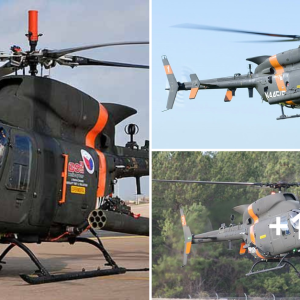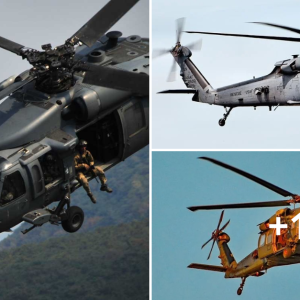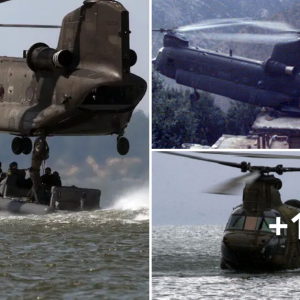The Apache helicopter doesn’t just look mean, it really is badass – which is why we’re happy it belongs to us and not the enemy.

The Apache helicopters have been provoking fear into our enemy’s eyes since the onset of their use in 1989 in Operation Desert Storm. Their air maneuverability, deadly assault weapons, and high-tech equipment make the Apache the ultimate assault and combat, helicopter the Army has to offer.
There isn’t just one aspect, or component, that makes the Apache so great, rather its all the features and technology working together as one that makes the Apache a serial assault helicopter.
This article dives into the aspects, such as, technology, build, manufacturing, and more, of the Apache helicopters. Here are all the reasons why we love the Apache helicopters.
15. They Are Flying Tank
The Apache helicopters endure the most strenuous and high-risk missions the military has to offer, therefore it has to be heavily armored. Due to this, a nickname for the Apache helicopters is the “flying tank”. If you had to get flown into a high-risk area, the Apache helicopter is the way to go!

14. State-Of-The-Art Electronics
One of the reasons the Apache helicopter is so successful is due to its highly advanced electronics. The electronics don’t need either the pilot or the gunner to see the target to destroy it, which is extremely useful in low visibility areas.
In addition, the Apache Longbow variant can track down vehicles of up to 4 miles, and can simultaneously track up to 256 targets.
13. ISIS Envies Them
Since the onset of the war against the Islamic State, the Apache has put fear in our enemies’ eyes. Continuing to eliminate ISIS enemy targets, the Apache’s fly dangerous missions to help turn the tides towards our Iraq allies. It is said that even the highest-ranked ISIS leaders fear the Apache’s.

12. The Most Successful Attack Helicopter
The Apache is by far one of the most successful attack helicopters our Army has ever seen. It’s capabilities and the fear it expels to our enemies proves to make it an incredible asset. Furthermore, with high production numbers (high for military helicopters at lest), proves the demand for the Apache’s and tells us they are here to stay for at least the foreseeable future.
11. Very Difficult To Fly
The maneuverability and high speeds of the Apache’s comes at a cost of making them very difficult to fly. A former pilot with the British Army Air Corps, Ed Macy, said in his book Apache: Inside the Word’s Most Deadly Fighting Machine:
“Flying an Apache almost always meant both hands and feet doing four different things at once. Even our eyes had to learn how to work independently of each other.”
This message shows just how skilled Apache pilots need to be to safely carry out these high stake missions.

10. Manufactured By Boeing
The Apache was first developed by Boeing (previously known as McDonnell Douglas) for the US Army. It began service in the Army in 1984 and is seen being used by Army’s across the world. Boeing is one of the worlds leading aircraft development manufactures, so it’s no surprise they were able to manufacture an ever capable machine.
9. Shielded Crew compartment
To protect the crew from severe damage, the crew is placed in a Kevlar compartment. Here they are the safest in case of an emergency where the helicopter is undergoing attack from surrounding enemies.
It’s a scary feeling to be attacked while in the air, but at least in the Apache’s you get some extra, well appreciated, protection.

8. The Integrated Helmet And Display Sighting System
The Integrated Helmet and Display Sighting System is one of the most distinguishing and compelling features on the Apache. This system allows the pilot or the gunner to slave the Apache’s chain gun onto their helmets making the gun track their head movements to wherever they look. This system is like no other and contributes greatly to the Apache’s success.
7. Individual Engine Protection
To help protect the Apache when it gets hit while under attack, the engines are both separately protected by armor plates. This design was enacted to help prevent losing both engines upon attack, further increasing the Apache’s capabilities and ability to make it back to base safely.

6. Consists Of Two Models, The AH-64D And The AH-64E
Two models make up the Apache Helicopter arsenal, the AH-64D and the AH-64E. The AH-64D model is referred to as the “Longbow” Apache. The Longbow superseded the previous AH-64A Apache by being manufactured with better capabilities and technology. And now the AH-64E model is beginning to surpass the AH-64D Longbow. The AH-64E will have an extended life expectancy, more capabilities, and will soon be the main Apache of the Army.
5. Multi-Role Use
The Apache was not intentionally made just for combat and assault purposes. One of the intentions for the Apache was for it to be used as transport protection for the Navy’s aircraft carriers and transport aircraft. This use widens the capabilities of the Apache helicopters and also contributes to the cooperation between the two military branches.

4. Defense Weapons
The weapons attached to the Apache’s are not something you want to mess with. Equipped with a 30mm automatic Boeing M230 chain gun, it can fire at a rate of 625 rounds per minute! A chain gun isn’t the only weapon in the Apache’s arsenal as they are also equipped with air-to-air missiles and guided and unguided missiles known as the precision kill weapon system. The lesson to be learned here is to never get in the way of an Apache helicopter
3. High Performance
The performance aspects of the Apache helicopters are nonetheless incredible. The Apache’s can climb at a rate of 889 meters per minute, travel at a rate of 279 km/h and has a range of 1,900 km. These stats are not surprising though, as these performance stats are required for the high stake missions the Apache’s embark on.

2. Some Apaches Are Foreign Made
Not all Apache’s are U.S. made by Boeing, a few are produced overseas. In the UK, the Apache AH-64D is in use by the British Armed Forces and it is produced under contract by Westmoreland Helicopters.
As long as our enemies’ hands stay clean of owning Apache’s, foreign-made Apache’s are welcomed.
1. Tandem Seated Crew
While most helicopters have the operators sit side by side, in the Apache, the operators sit tandem to each other, the pilot sitting above and behind either the copilot or gunner. In both scenarios, each crew member has the ability to fly and engage weapons from their seating positions. Between each crew compartment, there is shielding to protect the crew members in case of a hit.





